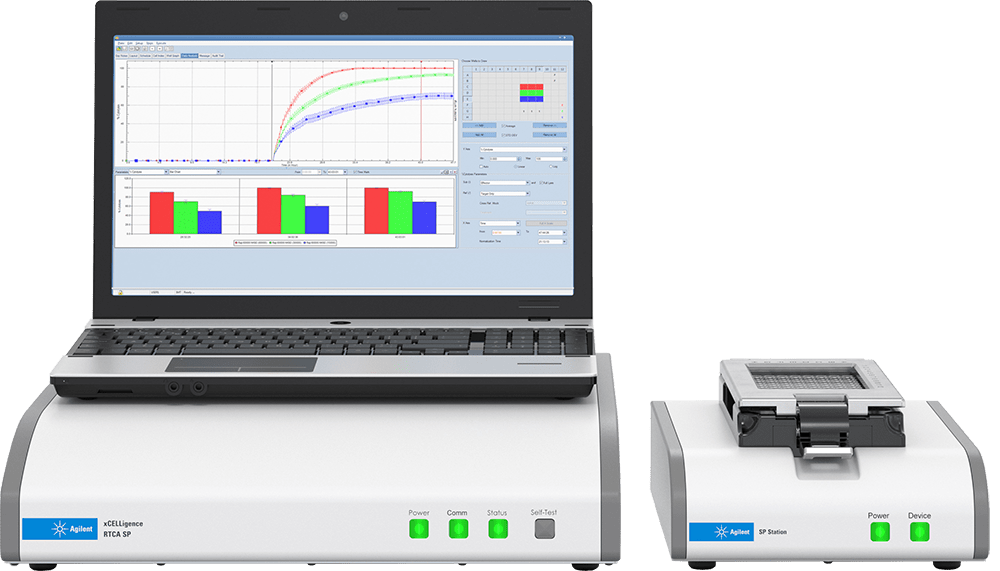The Agilent xCELLigence Real-Time Cell Analysis (RTCA) HT instrument uses label-free cellular impedance to continuously monitor cell health, behavior, and function with high accuracy, sensitivity, and reproducibility. Simply plate cells, add treatments, and begin monitoring cell behavior to obtain real-time kinetic data for assay windows that stretch from seconds to days.
Integration of the xCELLigence RTCA HT instrument with BioTek BioSpa 8 automated incubator expands the screening throughput of your RTCA HT instrument to 3,072 wells, making this system ideal for high throughput screening of therapeutic antibodies, drug compounds, and cytotoxicity.
The HT model can run a 384-well electronic microplate (E-Plate 384), which is ideal for high-throughput screening experiments. Integrate up to 4 instruments controlled by a single control unit for a total of 1,536 wells to meet high throughput sample screening needs. The RTCA HT model can be used as a single instrument on a standard lab bench or integrated into a multi-instrument high-throughput workflow with automated liquid handling.
The highly sensitive real-time cellular impedance assay noninvasively measures cell properties using gold microelectrodes fused to the bottom surface of an E-Plate. The presence of adherent cells at the electrode-solution interface impedes electron flow. The magnitude of this impedance is dependent on the number of cells, the size and shape of the cells, cell barrier function formation, and the cell-substrate attachment quality. Neither the gold microelectrode surfaces, nor the applied electric potential (22 mV), have an effect on cell health or behavior.
| Analyzer Application | Adhesion | Apoptosis | Cell Characterization |
| Cytotoxity | Immune Cell Killing | Proliferation | |
| Receptor Signaling | Stem Cells | Virus Cytopathic Effects | |
| Depth | 13.5 cm | ||
| Height | 13.5 cm | ||
| Operating Environment Relative Humidity | 5-98 % | ||
| Operating Environment Temperature | 15-32 °C | ||
| Sampling Format | 384-well plate | ||
| Width | 16.5 cm |
 Immune Cell Killing Assays
Immune Cell Killing Assays
Register to receive email updates on our new products, special promotions and events.
Home » Instruments » xCELLigence RTCA HT
© Copyright 2025. All Rights Reserved.
A Beun - De Ronde company